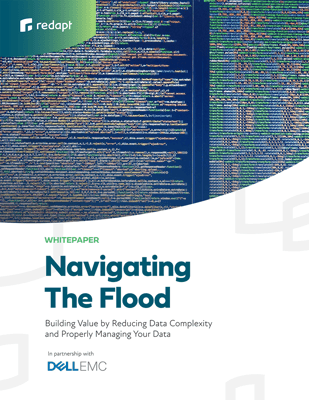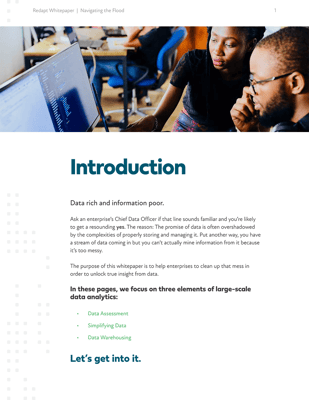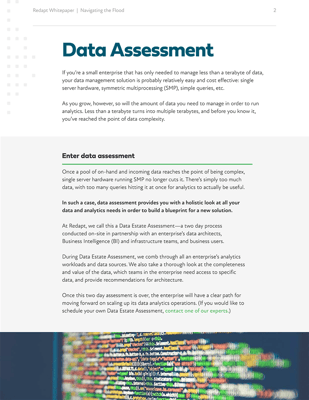Your enterprise has a large amount of data, with more and more coming in every second of every day.
You’re finding it challenging—if not impossible—to keep all that data organized and manageable, especially given all the applications and tools needing access.
Welcome to what’s called “data gravity.”
What is data gravity?
Coined by author Dave McCrory, data gravity is the idea that the more data that goes into a location, the more applications are going to be pulled toward it.
While the goal is for applications to be able to access data, one of the problems with data gravity is while there may be more efficient places to perform analysis on data, it’s often easier to settle with a resource that is near it. Also, the more data gravity that exists, the harder it can be to transfer data to another location or make it available for other applications.
Download Now: Navigating the Flood: Building Value by Reducing Data Complexity and Properly Managing Your Data
This not only limits the flexibility of an enterprise, it can also lead to large data sets becoming unorganized, since data gravity makes actually managing the data challenging.
How do you break free from data gravity?
The key is to store your data properly from the outset.
Or, if that particular train has already left the station, you’ll want to rethink and reorganize all of your data in such a way that guidelines are in place to keep everything manageable.
To that end, data warehousing makes it possible for you to take large amounts of data from various places and storage solutions and place it in a centralized data location—a warehouse—where it can be aggregated and analytics can be run in a single location.
This solves many of the problems of data gravity. It also forces you to put in place proper guidelines for future aggregation and management as more data comes in.
What happens if you don’t take steps to avoid data gravity?
First and foremost, you’re going to have missed opportunities in business insight and business value.
Without utilizing solutions such as data warehouses, you’re eventually going to reach a point with your data that your engineers or analysis teams will run into roadblocks solving problems because the data they need—and the permissions to access it—will be in separate places, with separate IT orgs.
This, in the end, wastes a lot of time and resources, since the ones who need to access data are spending more time finding and organizing it than they are actually working with it.
Don’t get pulled into a black hole by data gravity. Download our free whitepaper, Navigating the Flood: Building Value by Reducing Data Complexity and Properly Managing Your Data.



















